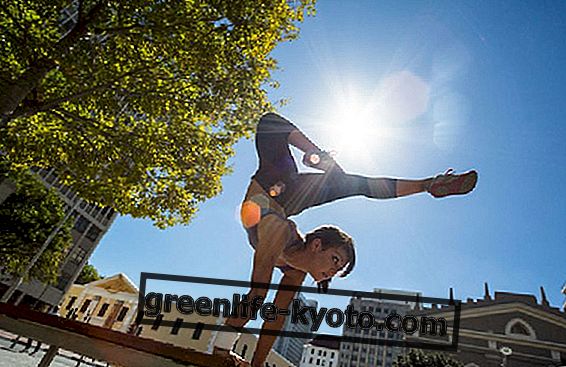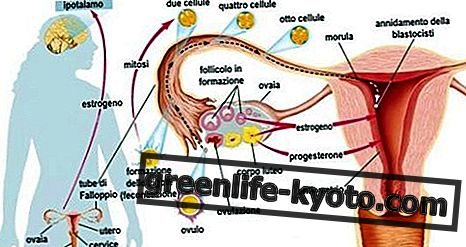Curated by Maria Rita Insolera, Naturopath
The Barberry ( Berberis vulgaris ) is a plant of the Berberidaceae family known since ancient times for its medicinal properties . Let's find out what they are.

Property of the Barberry
Phytotherapy gives the barberry numerous properties, such as:
- Stomachic - eupeptic : it is a bitter tonic used as a stomachic in dyspepsia; regulator of digestive function. It also has the power to stimulate the appetite in cases of loss of appetite.
- Laxative : at high doses, but not excessive, it is a mild purgative, useful in cases of constipation and constipation.
- Epatoregolatore : acts by regulating the activity of the liver through a purifying action, making it fit within the functional limits in cases of hepatic hypertrophy and jaundice.
- Colagogo : closely linked to the epatoregulatory function, it is the most specific of bile production and release (cholagogue action), which positively prevents cases of biliary lithiasis (gallstones). There is also a better intestinal fat emulsion caused by the greater release of bile.
- Diuretic : the diuretic function is mostly given by the leaves. Indicated in cases of hydropsy, a medical term to indicate the accumulation of liquids. With this effect, the barberry is indicated for those suffering from gravel, that is, sandy deposits in the kidneys. In fact it facilitates its elimination through urine and prevents the accumulation of oxalates, responsible for its formation and possibly transformation into calculations.
- Adaptogen : the large amount of vitamin C, makes it an adaptogen against winter and spring colds.
- Febrifuge : the property of lowering the body temperature contained in the fruit, pushed the barberry to be used as a general febrifuge, whether it was flu fever or typhoid fever.
Its most important active ingredients are berberine (an isoquinoline - alkaloid) and berbamine (a benzylisoquinoline), present in all parts of the plant, except in fruits and seeds. Berberine is widely considered in the pharmaceutical field for its antimicrobial and antisecretive properties, in the treatment of various types of infections such as bacterial diarrhea and recurrent infections with Candida albicans, due to its hypocholesterolemic and hypoglycemic properties .
Method of use
There are three parts of the plant that are used in phytotherapy:
- the bark of the roots, which is harvested in late autumn;
- the leaves, harvested in spring;
- the fruits that are picked when ripe.
You can prepare an excellent natural herbal tea made from barberry: just pour 150 ml of boiling water on 1-2 teaspoons of dried leaves and let the mixture stand for at least five minutes and then filter it.
As for the decoction of barberry root, instead, a teaspoon of finely shredded root bark should be poured into 150 ml of boiling water, then boil for at least 20-30 minutes and then filtered. The methods of recruitment should not exceed one cup 1-2 times a day.
There is also barberry syrup that can be prepared very easily: just insert 500 grams of ripe berries in water and then wait until they have softened, then pass them and add them with a little honey: leave cook until you get an excellent syrup, letting it cool and then pouring it into a glass bottle.
As for the external use, the barberry can be effectively used to make gargles and frictions on the gums, to counter the pyorrhea: it is recommended to use the decoction of the bark and root at 5-8%. The mother dye is directly extracted from the bark, dried from the root, subjected to a particular process and then packaged in tablets or drops. There is also the possibility, however, of buying the mother tincture also in the form of a solution, especially the vials that are used for injections.
Being able to use all the parts of the plant, you can make all the forms : powder for capsules and tablets, decoctions, herbal teas and infusions, fluid extracts and tinctures.
Contraindications of barberry
Avoid using barberry in the case of cardiorespiratory insufficiency and hypersensitivity to one or more components. At high doses there can be intoxications due to the many alkaloids present. Administration to children is not recommended.
Description of the plant
The barberry ( Berberis vulgaris ) is a plant belonging to the Berberidaceae family. The name of the genus comes from the Greek Berberi, which means Conchiglia, due to the petals made in conca.
It is a tall tree from one to three meters with large dark roots outside and yellow inside; the plant has many spiny branches. The leaves are elliptical, narrow at the base in a short petiole and rounded at the apex; the surface is large and shiny, the edge is serrated. The leaves are alternate on the long branches or are gathered in bundles on very short branches, at the base of each of which there is a thorn composed of three to seven prickly spikes. The fruit is a 1 cm long berry, red and persistent on the plant, which contains two to three seeds with a horny shell.
Habitat del Crespino
It is a plant that develops mainly in the woods, hedges, uncultivated fields and, in particular, in the European and Caucasus mountains, while in Italy it can easily be found in the Apennines and in the Alps.
The barberry is found in Italy, especially in the alpine and pre-Alpine areas and grows up to 2500 meters above sea level, more generally in the pastures and in dry soils.
Background
The barberry has a name that derives from an Arabic word, or "harbaris", which indicated all those fruits of these plants, which were often exploited as a medicinal essence even by the followers of the Salerno School.
In the Middle Ages it was mistakenly used as a cure against typhus . The belief that he could fight this disease was given by the fact that he is able to lower the body temperature and to give a momentary relief, without however affecting the real cause of the disease.













